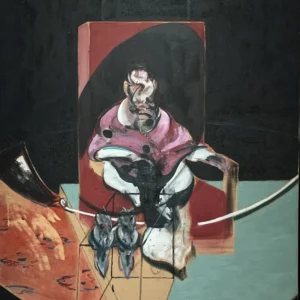The Time is Always Now at the National Portrait Gallery, featuring 22 black artists from the UK and the US, goes beyond reframing the black figure in contemporary art, delving into fragmentary narratives, lineages, and diaspora backstories.
Curated by Ekow Eshun, The Time is Always Now delves into the intersection of imagination, reality, and memory, transcending temporal and spatial boundaries. Emphasizing diversity in artistic styles and skin tones, the exhibition explores the political significance of the Black figure, addressing presence and existence in historically white contexts. The display celebrates the talent of Black painters and contemporary painting in a visually stunning manner.
The artworks delve into the social, psychological, and cultural contexts in which they were created. They depict the complexity and indefinability of the Black figure and Blackness itself, with various artists presenting personal narratives and exploring historical themes, including instances of racism.
One of the highlights is Thomas J Price’s monumental bronze black woman, depicted in a pose of concentration as if listening to music only she can hear. Another work by Claudette Johnson presents a self-portrait against a backdrop derived from Picasso’s Demoiselles d’Avignon, challenging cultural representations.
Nathaniel Mary Quinn’s paintings reflect a chaotic blend of identities, with faces appearing on the verge of disintegration. Known for her portrait of Michelle Obama, Amy Sherald stands out with a painting that possesses a static and poised quality, emphasizing understated details within a calculated stillness. Her use of greyscale reduces skin tones to a monochromatic scale.
Kerry James Marshall, Henry Taylor, Lubaina Himid, and Kimathi Donkor’s works are noteworthy. Marshall’s paintings focus on densely black figures, depicting the challenges of being a black artist in a historically white art world. Taylor’s work raises questions about the relationships between characters, while Himid’s art portrays scenes laden with historical significance, such as the slave ship Le Rodeur.
Noah Davis’s paintings evoke a sense of impending tragedy, depicting the Tulsa race massacre. Toyin Ojih Odutola creates imagined lives for a fictional wealthy Nigerian family in the US. Jordan Casteel paints an elderly man she befriended in Harlem. Denzil Forrester’s painting “Itchin and Scratchin” embodies futurism and cubism, capturing the vibrancy and energy of the scene with humor and intelligence.
The Time is Always Now is on display through May 19, 2024.



